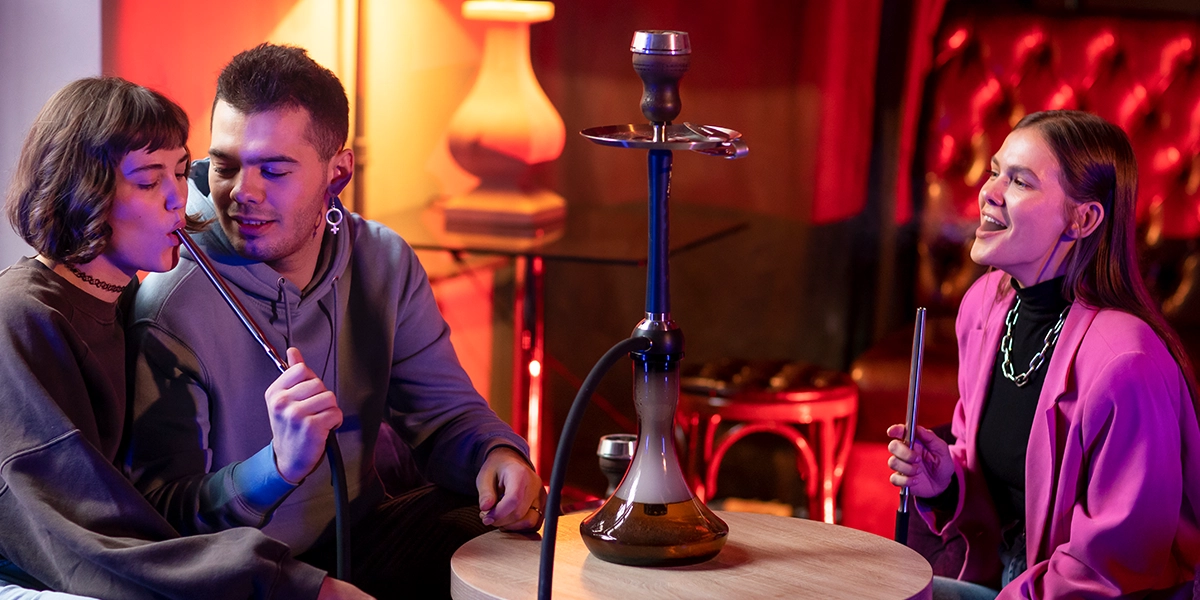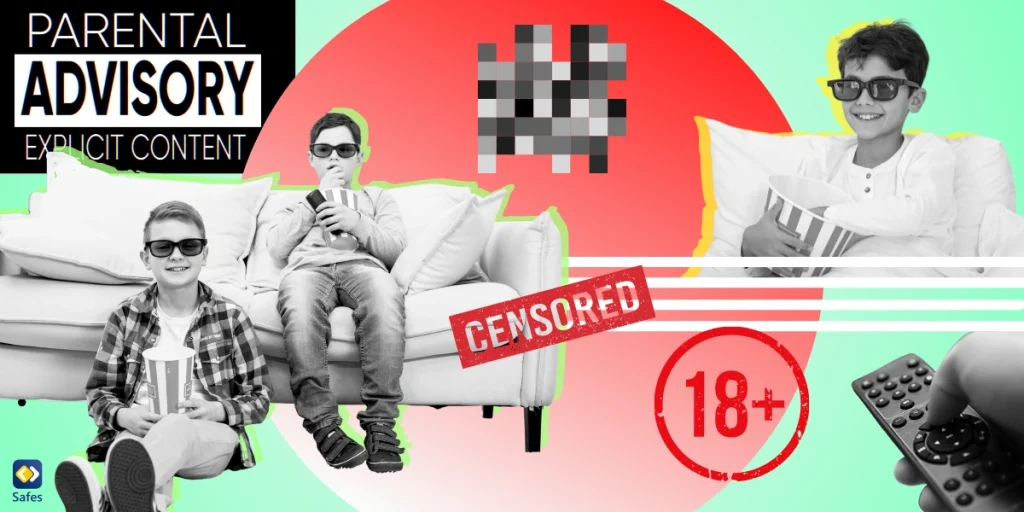Gruppenzwang ist eine Kraft, mit der man rechnen muss. Wenn Sie jung und beeinflussbar sind, kann Gruppenzwang verheerende Folgen haben. Was passiert, wenn Sie von Menschen umgeben sind, die Sie ständig dazu ermutigen, Dinge zu tun, die nicht in Ihrem besten Interesse sind? Es kann schwierig sein, dem Drang der Menschen um dich herum zu widerstehen, wenn sie alle so begeistert davon zu sein scheinen. In diesem Artikel werden wir die Macht des Gruppenzwangs bei der Entscheidungsfindung von Teenagern untersuchen und die Frage beantworten: „Wie wirkt sich Gruppenzwang auf Teenager aus?“ und bieten Strategien für Eltern, um ihren Teenagern zu helfen, damit umzugehen.
Download and Start Your Free Trial of the Safes Parental Control App
Beispiele für Gruppenzwang bei Teenagern
Egal, ob du in der Schule bist oder mit deinen Freunden rumhängst, Gruppenzwang ist immer möglich. Was den Gruppendruck in der High School von dem in der Grundschule unterscheidet, ist, dass Sie sich Ihres Reifegrads bewusster sind. In der High School ist man sich sehr bewusst, dass man soziale Hinweise erhält, die einen dazu bringen könnten, Dinge zu tun, zu denen man nicht unbedingt bereit ist.
Es gibt eine Reihe verschiedener Arten von Gruppenzwang, denen Teenager ausgesetzt sein können, darunter:
- Normativer Gruppenzwang:Dies ist der Fall, wenn Ihre Freunde Sie unter Druck setzen, bestimmte soziale Normen und Verhaltensweisen einzuhalten, z. B. sich auf eine bestimmte Weise zu kleiden, auf eine bestimmte Weise zu sprechen usw.
- Moral Peer Pressure: This is when your friends pressure you to make certain decisions that are in line with a „darker“ moral code, e.g. B. Making decisions that are harmful to yourself or others.
- In-Group/Out-Group Peer Pressure: This is when your friends pressure you to be part of an „in-group“ and exclude you from the „out-group“.
Examples of common situations in which teenagers can experience peer pressure
- You’re hanging out with a group of friends when one of them pressures you into sneaking out of the house. You don’t want to disappoint your friends, but you don’t want to do anything you’ll regret either.
- You’re at a party with some friends, and one of them urges you to drink alcohol, which in most states you’re underage.
- A classmate you like is flirting with you, but then one of your friends comes up to you and urges you to ignore the flirtation and focus on hanging out with your friend.
- You have a crush on a boy in your class, but then your friends urge you not to date him because they have a certain guy they find more attractive.
- You are among friends and one of them is urging you to go shopping, eat at a fancy restaurant, etc.

The influence of social media on peer pressure
With social media, teenagers are spending increasing amounts of time interacting with their peers online. As a result, peer pressure may be reaching your teens faster than ever. Social media has been proven to increase the prevalence and intensity of normative peer pressure. Social media makes it easy for teens to connect with their peers and get cues on what their peers are doing and how they should behave.
How can safes reduce the influence of social media on peer pressure?
The Safe Parental Control app can help reduce the impact of peer pressure on teenagers in several ways. First, the app gives parents the ability to monitor and control their children’s social media usage, so they know what their teens are exposed to online. It also offers tools to block specific websites and prevent teens from accessing inappropriate content. Additionally, parents can limit the time their children spend on social media, reducing the likelihood that they will be influenced by their peers‘ activities. Finally, the blog The Vaults provides resources and guidance on how to talk to teenagers about the importance of making correct decisions and the potential risks of following the crowd.
Safes are available in both Android and IOS versions.
Download now and experience premium features with a 14-day free trial. If you have any questions about using safes, you can find the guidance you need by following the links below:
- Windows Parental Controls
- Macbook parental controls
- Parental Controls on Android
- iPhone Parental Controls

Negative effects of peer pressure on teenagers
Peer pressure can have a significant and lasting negative impact on teenagers‘ lives. Emotionally, teens can experience feelings of insecurity, self-doubt, and fear when peers force them to do things they are not comfortable with. Decisions made under peer pressure often result in adolescents engaging in activities or using substances that can have long-term consequences. As a result, school performance can also suffer as teenagers are busy adjusting or meeting social expectations. The negative effects of peer pressure can also extend to health, as teenagers may become more prone to taking risks and engaging in activities that are not healthy or safe.
Possible impact of peer pressure on decision-making
Adolescents are still forming their own identities and have many unanswered questions about what they want to be when they grow up. It is therefore extremely important for adolescents to develop their own self-confidence during their personality development. Peer pressure can make it difficult for teenagers to maintain their self-esteem by encouraging them to do things that are inconsistent with their values and interests.
Potential impact of peer pressure on academic performance
Peer pressure can negatively impact academic performance in a number of ways. Teenagers often feel pressured by their peers to conform to certain academic standards. This can create a competitive atmosphere where students focus more on competing than improving their grades.
On the other hand, some teens may give in to peer pressure to engage in activities such as skipping class or cheating on assignments, which can hamper academic performance.
Finally, negative peer pressure can lead to a lack of motivation and self-confidence, as teenagers can begin to doubt their own abilities when surrounded by peers who are critical of their work.
Gesundheitliche Folgen riskanter Verhaltensweisen unter Gruppenzwang
Unter Gruppenzwang riskante Verhaltensweisen zu zeigen, kann schwerwiegende potenzielle gesundheitliche Folgen haben. Beispielsweise kann das Experimentieren mit Drogen oder Alkohol zu Sucht und Drogenmissbrauch führen, während ungeschützter Sex dazu führen kann sexuell übertragbare Infektionen zu bekommen . Andere negative gesundheitliche Folgen sind ungewollte Schwangerschaften, Depressionen und die Entwicklung von Essstörungen aufgrund des Drucks, sich an bestimmte Körperstandards anzupassen. Die langfristigen Auswirkungen dieser negativen Folgen für die Gesundheit können körperliche, psychische und emotionale Schäden verursachen. Das Verständnis der potenziellen gesundheitlichen Folgen von Gruppenzwang ist unerlässlich, um fundierte Entscheidungen über riskante Verhaltensweisen zu treffen.

Adressieren des Gruppenzwangs
Wie wir am Anfang dieses Artikels erwähnt haben, ist Gruppenzwang schwer zu widerstehen. Eltern müssen sich der sozialen Hinweise, die ihre Teenager erhalten, sowie ihrer Stimmungen und Gefühle sehr bewusst sein. Wenn Sie bemerken, dass Sie frustriert oder wütend auf Ihren Teenager werden, sollten Sie versuchen, diese Gefühle zu vermeiden, damit Sie so objektiv wie möglich entscheiden können, was Sie von ihm erwarten.
Wie kann ich meinem Teenager helfen, nicht mehr von Gruppenzwang beeinflusst zu werden?
Der beste Weg, Ihrem Teenager zu helfen, dem Gruppenzwang zu widerstehen, besteht darin, ein positives Vorbild für ihn zu sein und ihm zu helfen, Selbstwertgefühl und Selbstvertrauen aufzubauen. Zeigen Sie Ihrem Kind, dass Sie seinem Urteilsvermögen vertrauen und seine individuellen Qualitäten und Entscheidungen zu schätzen wissen. Bringen Sie ihnen bei, unabhängige Entscheidungen zu treffen und sich damit wohl zu fühlen, wer sie sind.
Ermutigen Sie Ihren Teenager, sich an positiven Aktivitäten zu beteiligen und starke Beziehungen zu Menschen aufzubauen, die ähnliche Werte und Interessen haben. Helfen Sie ihnen, ein starkes Unterstützungsnetzwerk aus Familie, Freunden, Lehrern und anderen Erwachsenen aufzubauen, die ihnen Orientierung geben können.
Sprechen Sie mit Ihrem Teenager über Gruppenzwang und helfen Sie ihm, Strategien zu entwickeln, um damit umzugehen. Besprechen Sie, wie sie zu negativem Verhalten Nein sagen können, und üben Sie Rollenspielszenarien, damit sie sich sicherer fühlen, an ihren Entscheidungen festzuhalten. Erinnern Sie sie daran, dass sie sich niemals unter Druck gesetzt fühlen sollten, etwas zu tun, das ihnen unangenehm ist oder das ihren Überzeugungen widerspricht.
Achten Sie schließlich darauf, am Leben Ihres Kindes beteiligt zu bleiben und eine offene Kommunikation mit ihm aufrechtzuerhalten. Ihre Unterstützung kann den entscheidenden Unterschied machen, wenn es darum geht, ihnen zu helfen, Gruppenzwang zu widerstehen
Abschließend, wie sich Gruppenzwang auf Teenager auswirkt
Puberty can be a very confusing time, and peer pressure can be a factor contributing to your teen’s confusion. It’s important to be aware of the different types of peer pressure your teen may face and what they may be doing under the influence of peer pressure. You can help your teen resist peer pressure by being a positive role model and helping them build self-esteem and confidence. Teach them to make independent decisions and surround themselves with people who share positive values. Encourage open communication and help them deal with peer pressure.
Your Child’s Online Safety Starts Here
Every parent today needs a solution to manage screen time and keep their child safe online.
Without the right tools, digital risks and excessive screen time can impact children's well-being. Safes helps parents set healthy boundaries, monitor activity, and protect kids from online dangers—all with an easy-to-use app.
Take control of your child’s digital world. Learn more about Safes or download the app to start your free trial today!




